Where Museums Go to Shop for Rare Works of Art
In the south of Holland, a Dutch city plays host to the art world’s biggest collectors
Over the centuries, the Dutch city of Maastricht, which juts out like a finger along the Netherlands’ southeastern border with Belgium, has hosted several invaders. The Spanish took over in the late 16th century; the prince of Orange conquered the city just north of half a century later; and then it belonged to the French on-and-off through the end of the 18th century. More recently, the Nazis took the city in 1940, only to cede it four years later.
For 10 days each year, a different sort of foreign contingency descends on the city. These invaders are wealthy--several land in private jets at Maastricht’s airport--and they depart with spoils. But unlike previous antagonists, these visitors pay for their loot. They’re high-profile shoppers, who attend The European Fine Art Fair (TEFAF), which traces its roots to 1975 and just concluded this year’s festivities.
TEFAF, a fair that is open to the public and costs €40 to visit, is essentially “a museum in which you can buy the objects,” says Mark Roglan, director of the Meadows Museum at Southern Methodist University in Dallas, who has bought about a dozen works in the eight years he’s been coming to the fair. “Everything is negotiable.”
In recent years, celebrity visitors have ranged from Calvin Klein to Kanye West; although many of the sales aren’t publicized, there were no reports that either bought anything. TEFAF is a place to not only purchase anything from Greco-Roman sculpture and Rembrandt paintings to jewelry, modern furniture, Andy Warhol paintings, and photography, but also--and perhaps more importantly--to be seen doing so.
Asked to describe the fair, which he has attended for 15 years, over breakfast at a Maastricht hotel, Eike Schmidt, the newly installed director of Florence’s Uffizi Gallery, Palazzo Pitti, and Boboli Gardens, called it a “super, mega-conference.”
“It’s basically the G8 of the art world. You have the biggest players in the museum world along with the biggest players in the collecting world and in the dealing world,” he says.
Navigating Maastricht is a study in contrasts. The city, which the Maas river divides into two banks, consists of a blend of medieval watchtowers and portals, modern architecture (e.g. the Bonnefanten Museum, which resembles a space shuttle launch complex), and centuries-old Catholic churches that now fulfill different functions. Boekhandel Dominicanen is a 13th century Dominican church-turned bookstore; Regional Historic Center Limburg, a state archive, took over a Franciscan church completed in the 15th century; and Kruisherenhotel, a hotel, adopted a 15th century monastery.
Those contrasts of old and new, sacred and profane dominate TEFAF as well. Where other fairs focus on a specific slice of the art market, TEFAF spans the spectrum. And although it contributes significantly to 10 days of hectic hustle-and-bustle in an otherwise relatively sleepy city, which doesn’t approach the tourist foot-traffic of an Amsterdam, Rotterdam, or The Hague, the fabric of the fair’s composition reflects the character of Maastricht, its host.
To be sure many of the pieces purchased at the fair will disappear from circulation and find their ways into private collections, never to be seen or heard from again, unless they are lent for exhibitions, or the collectors choose to resell them. (In the five iterations of the fair that I’ve covered, I’ve seen quite a few works return year after year, although it’s not always possible to tell what has sold and is reselling, or what returns to the gallery unsold after the fair.) But for the 10 days, Maastricht also hosts many museum representatives, which can alter that paradigm when they purchase works. Artwork that had previously been inaccessible to the public can find their way into considerably more accessible positions.
Among the 75,000 people who attended the fair this year, collectors came from more than 60 countries and 254 were representing museums. Among those who attended this year was Arthur Wheelock, curator of northern Baroque paintings at Washington’s National Gallery of Art. “It’s amazing how many different ways you can spend money in life,” he says.
Wheelock, who has come to TEFAF for 25 years and who always stays in the city’s historic center, notes the “striking” range of objects for sale at the fair. “The galleries that focus on decorative arts also have old masters paintings in them,” he says. “It’s the best of the world, as far as I know.”
Among the early sales that TEFAF reported in a press release were a range of objects: a pair of Chinese bronze ring handles from the eastern Zhou period (770-221 B.C.), which sold for about €300,000; an elaborately decorated silver wine vessel from 6th to 8th century Iran, which sold for $275,000; and two c. 1900 reliefs by Georg Klimt--brother of the more famous painter Gustav Klimt--sold for €400,000.
At TEFAF, more crossover buying occurs of art in different media and from different periods than does even at art auctions, in the estimation of Schmidt, the Florence-based museum director. And as important as the masterpiece shopping, is the social component. In addition to scheduling meetings, Schmidt inevitably runs into colleagues from around the world.
“Always things come out of Maastricht,” he says.
Walking through the 2016 fair with a museum director and separately with a curator, it’s easy to grasp Schmidt’s point. Both interviews were halted frequently so the museum officials could greet and catch up with colleagues--this one a curator at the Louvre, that one a prominent collector from Spain, and another a former boss, who holds one of TEFAF’s 275 booths.
Two changes were afoot at TEFAF this year, and although they are of greater interest to insiders than the general public, their impact has the potential to greatly influence broader sales and which works find their ways into major museums and galleries.
Last month, TEFAF announced that it would, for the first time, expand to New York, and host two mini-fairs in Manhattan: one spanning from antiquity to the 20th century in October 2016, and the other, in May 2017, focusing on modern and contemporary art and design.
And in Maastricht, the fair altered the floor plan, to allow three entry points rather than the previous one. That move, several dealers say, democratized the space and allowed easier access to some of the galleries which had previously required a good deal of maneuvering. It no longer mattered as much to be located on a main aisle of the fair. (A section for works on paper, which previously had a reputation of being a “paper ghetto,” according to a curator, was also given more prominence.)
“We are only two hours into and we are seeing the difference,” says Dino Tomasso, co-director of Tomasso Brothers Fine Art in the United Kingdom who has sold at TEFAF for six years, of the new layout. “It makes the flow of the fair easier.” Previously, he says, it took clients three or four hours to arrive at certain booths.
The fair’s announcement that it will expand to New York received mixed reviews. Noting the abundance of New York fairs, Tom Rassieur, curator of prints and drawings at the Minneapolis Institute of Arts, wonders about fair fatigue. “I think it puts a lot of pressure on dealers and on clients, because ‘Do I have to go to that one too?’”
Others, like Tomasso, who hopes to exhibit at TEFAF in New York, see things differently. “New York seems a very natural choice,” he says. “It will create a buzz wherever it is. I don’t think this [Maastricht] will always be the mother ship.”
Sam Fogg, whose eponymous gallery is in London and who has exhibited at TEFAF for 25 years, thinks the New York fair will do well, but it won’t replace Maastricht.
“Maastricht is a place to make a special trip. You have to come here for a couple of days. There’s not much else to do here but look at art. And so you can just devote yourself,” he says. “That’s a very different idea from what we have in London or New York.”
Jim McConnaughy, senior vice president at S.J. Shrubsole, a New York-based antique American and English silver and jewelry dealership, thinks there are other cultural differences.
Americans who come to Maastricht expecting an American-styled fair, which can be viewed in an afternoon, are generally surprised at how large TEFAF is and that it requires several days to view, says McConnaughy, who has come to TEFAF for 20 years. “There’s no other show like this one,” he says. “There will be a specialist in leather wall coverings. How is that even possible?”
Maastricht also has a tendency to go with a “very lush, European look,” while U.S. shows generally are a “little bit more seat of the pants,” according to McConnaughy. He sees two possibilities at TEFAF in New York: “One is people saying, ‘Gosh. They’re spending all this money on the stand?! What does that do to the prices?’ Or, ‘This is the most wonderful thing I’ve been to see. It’s magic.’”
/https://tf-cmsv2-smithsonianmag-media.s3.amazonaws.com/accounts/headshot/mw_by_vicki.jpg)
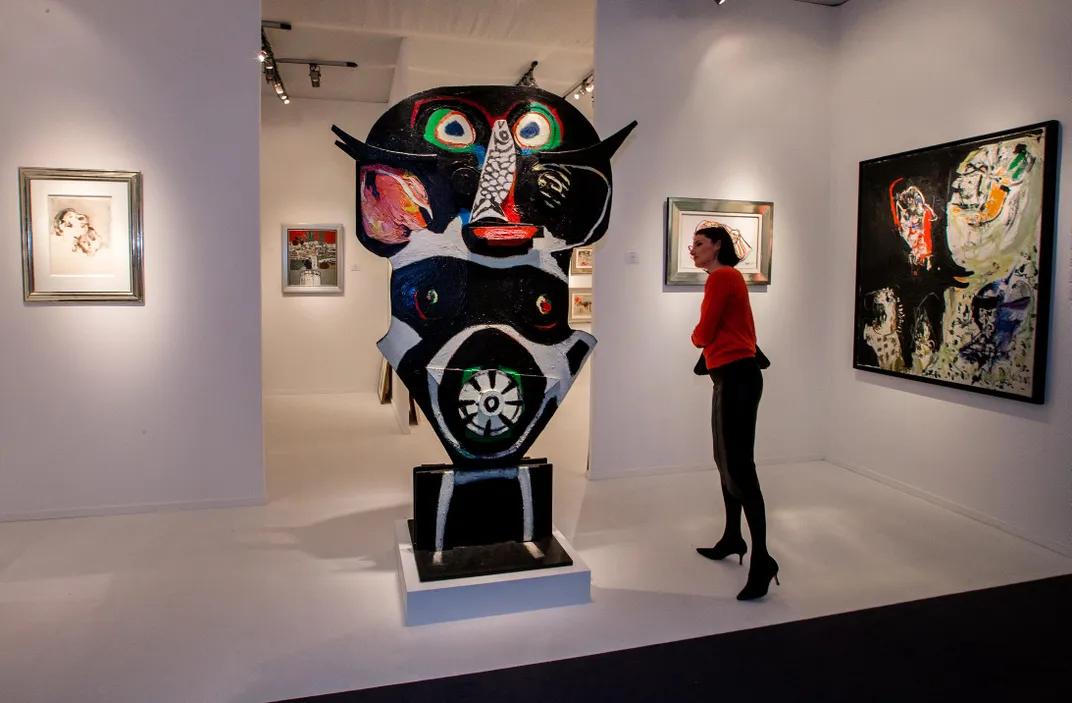
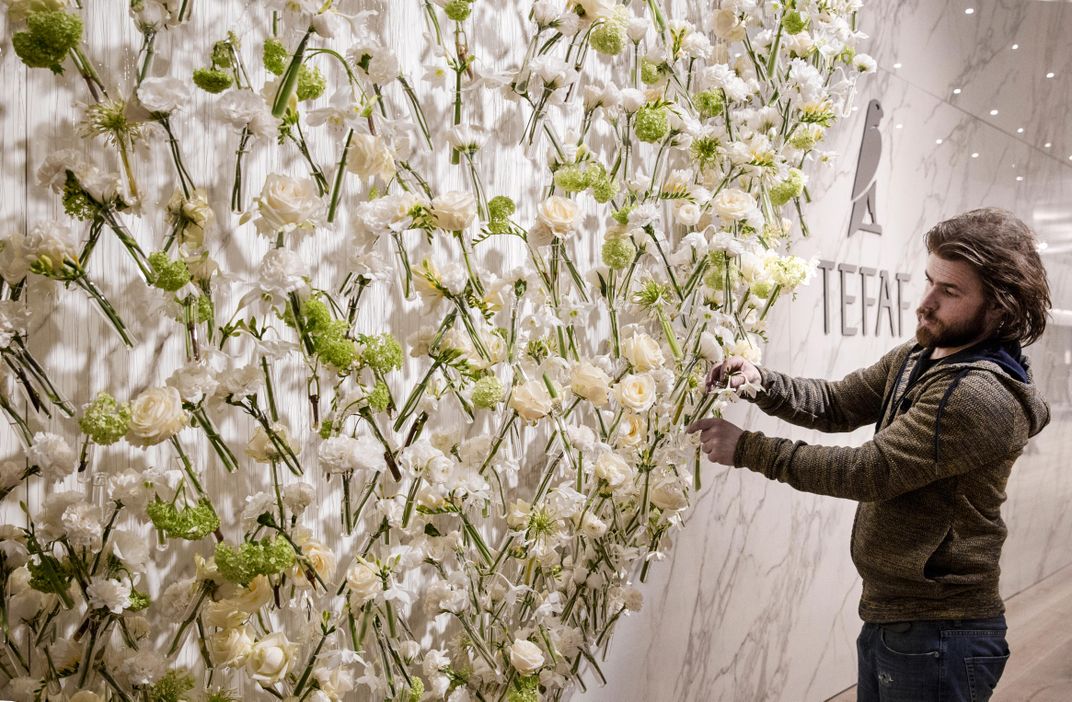
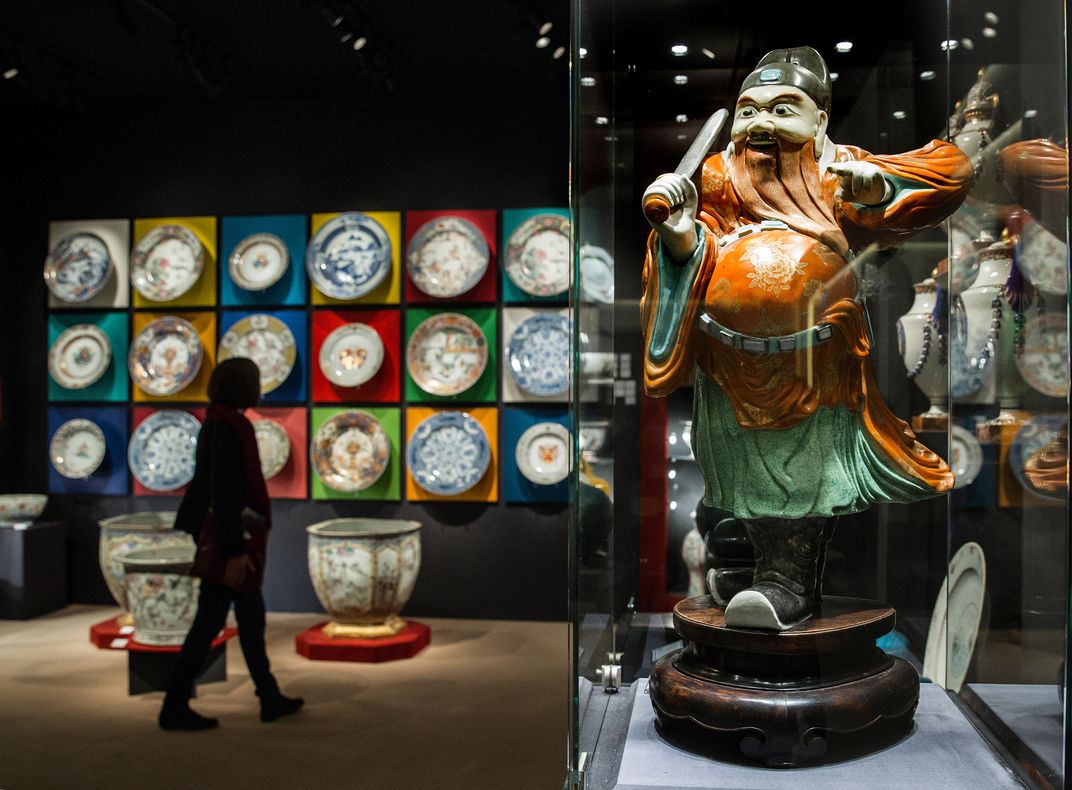
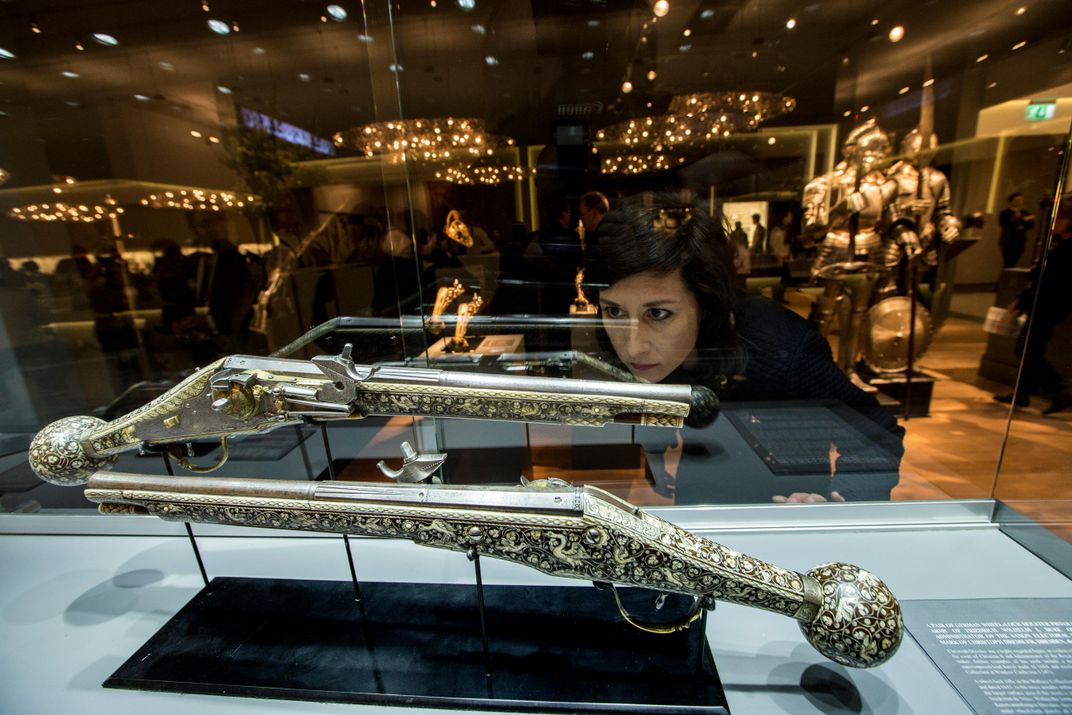
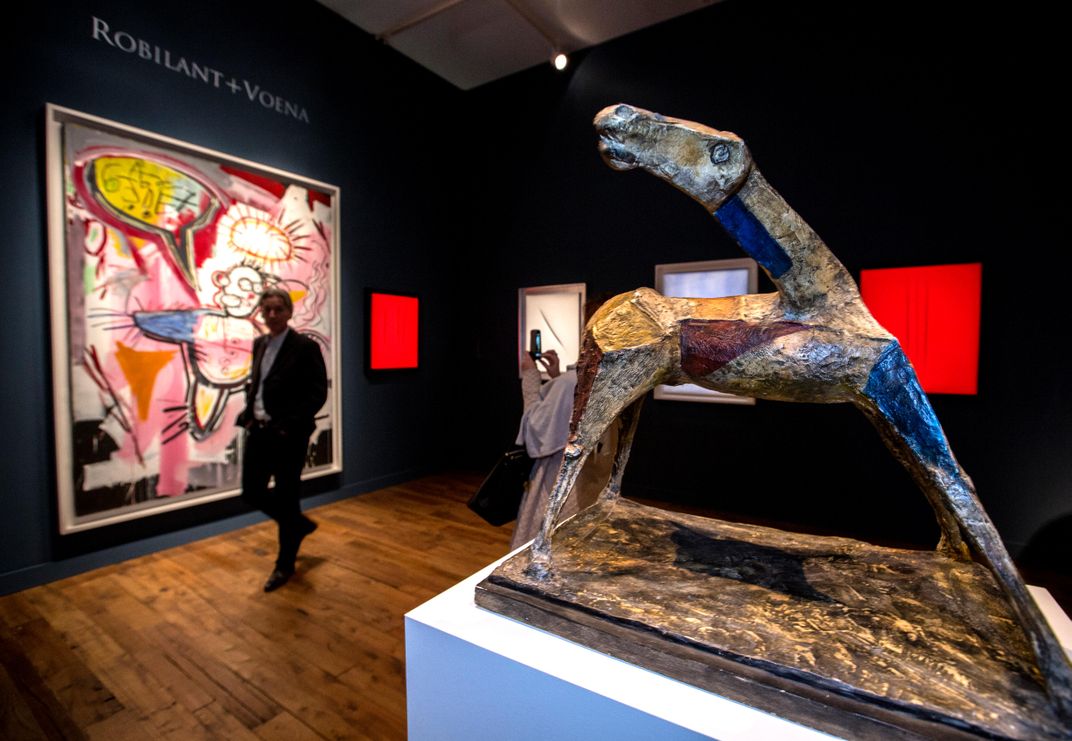
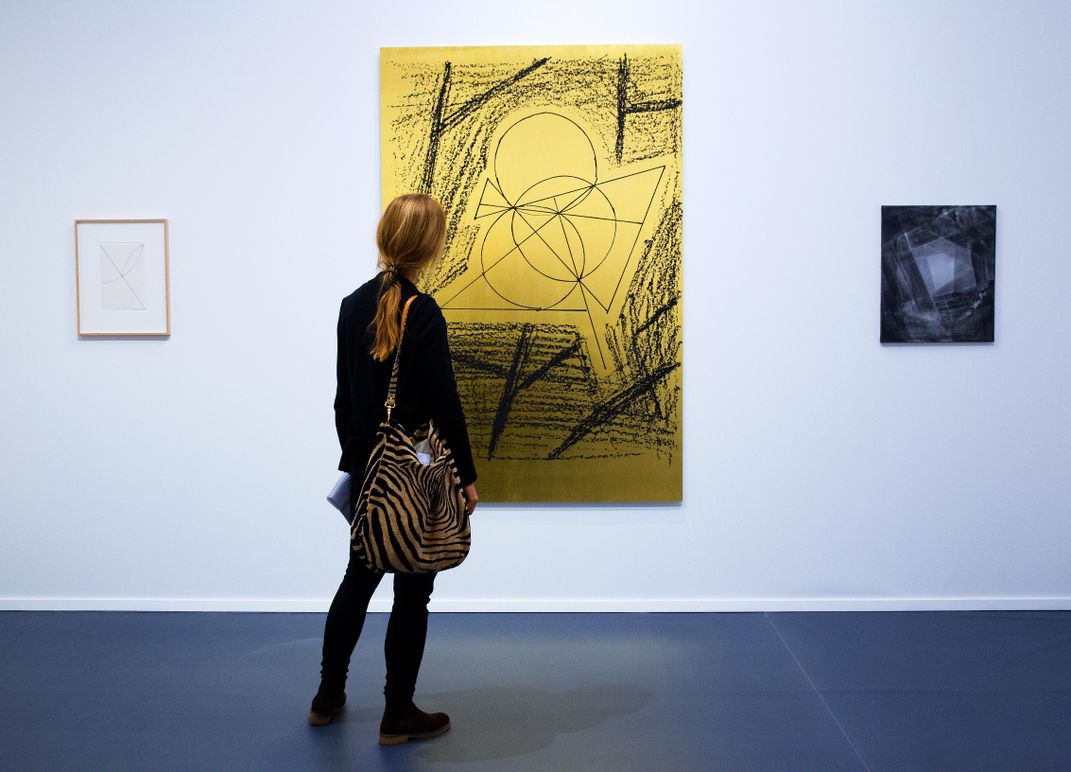
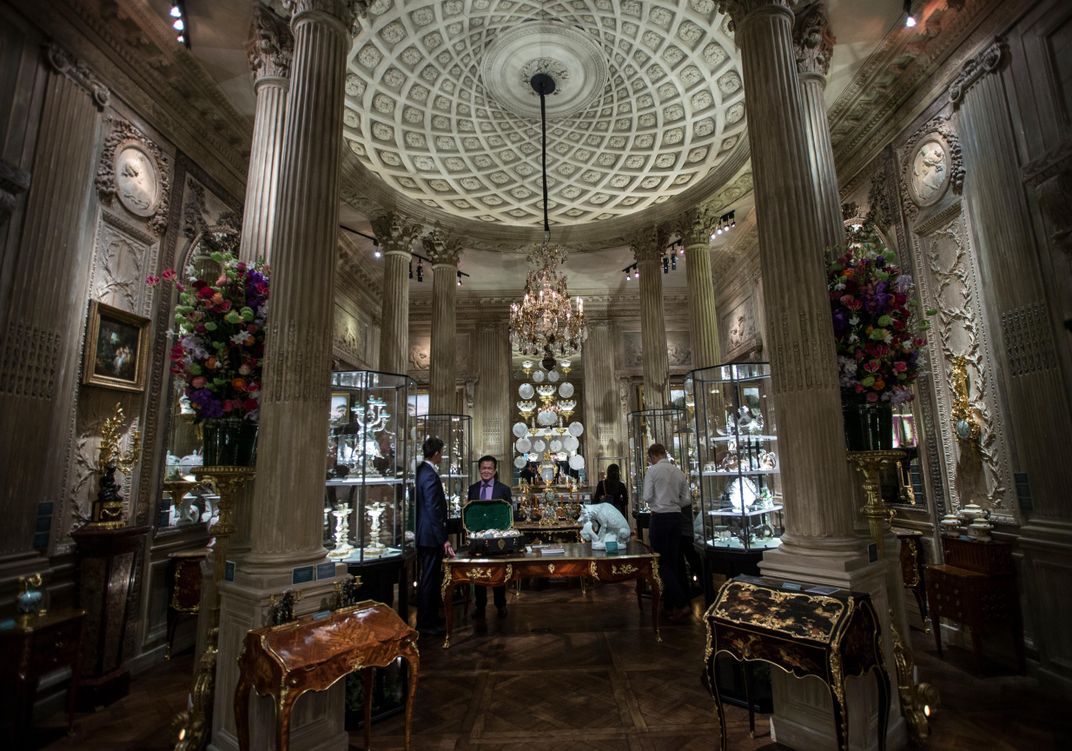
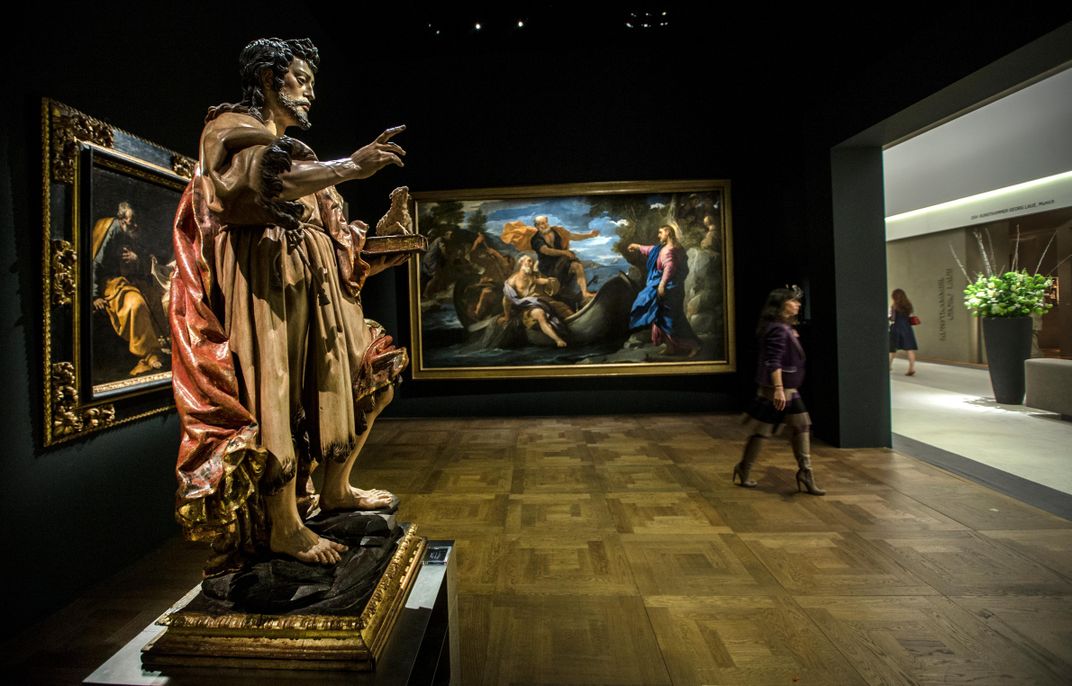
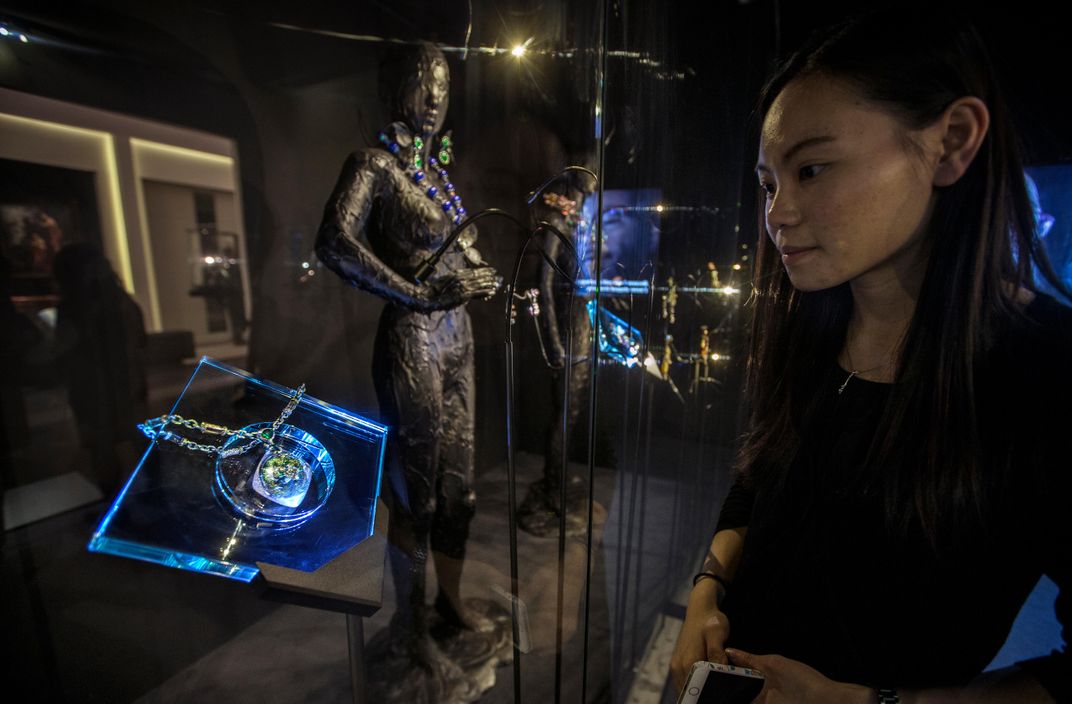
/https://tf-cmsv2-smithsonianmag-media.s3.amazonaws.com/accounts/headshot/mw_by_vicki.jpg)